Contact Details
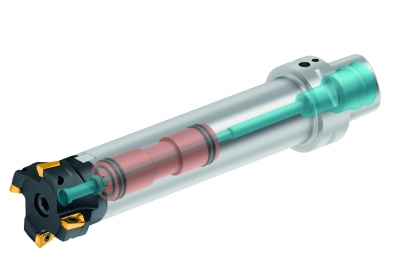
Walter has introduced the Accure·tec AC001 vibration damping adaptor especially for shell mill mount milling cutters. It delivers increased productivity and stability along with greater surface quality, improved tool and spindle life and is ideal for deep pocket milling in operations at depths of up to 4 x D.
The vibration damping for this patented system is provided by the axially and radially flexible positioned damper element which is preset at the factory so tools can be used immediately without time-wasting fine tuning. These Accure·tec adaptors are ideally suited for the Walter Xtra·Tec® XT milling cutter range. This makes the system highly versatile. For example, for components with deep cavities in aircraft construction and aerospace industry in general, as well as the automotive, energy, die/mold, and general metalworking industries. Users can benefit from both the vibration damping and a system with low noise levels.
Accure·tec delivers its advantages of longer tool life, higher productivity, and greater process reliability at depths of cut up to three
times that obtained with conventional methods. Internal coolant further optimizes chip removal. Walter offers Accure·tec with all popular machine interfaces: Walter Capto™, HSK/HSK-T, ISO, MAS-BT, CAT and parallel shank.
In addition, Walter has announced new sizes to its existing Accure∙tec A3000 boring bar line that incorporates the same technology as the AC001 vibration free long milling tool adaptor. The A3000 is now available in 1.00 in. and 25 mm diameters in steel, as well as 1.00 in. and 1.25 in. diameters in carbide at 10 x Dc. The product extension also includes Capto C4, C5 connections in 25 mm diameter along with HSK-T63 connections in 25, 32, 40, 50 mm diameters.
Related Glossary Terms
- boring
boring
Enlarging a hole that already has been drilled or cored. Generally, it is an operation of truing the previously drilled hole with a single-point, lathe-type tool. Boring is essentially internal turning, in that usually a single-point cutting tool forms the internal shape. Some tools are available with two cutting edges to balance cutting forces.
- boring bar
boring bar
Essentially a cantilever beam that holds one or more cutting tools in position during a boring operation. Can be held stationary and moved axially while the workpiece revolves around it, or revolved and moved axially while the workpiece is held stationary, or a combination of these actions. Installed on milling, drilling and boring machines, as well as lathes and machining centers.
- coolant
coolant
Fluid that reduces temperature buildup at the tool/workpiece interface during machining. Normally takes the form of a liquid such as soluble or chemical mixtures (semisynthetic, synthetic) but can be pressurized air or other gas. Because of water’s ability to absorb great quantities of heat, it is widely used as a coolant and vehicle for various cutting compounds, with the water-to-compound ratio varying with the machining task. See cutting fluid; semisynthetic cutting fluid; soluble-oil cutting fluid; synthetic cutting fluid.
- gang cutting ( milling)
gang cutting ( milling)
Machining with several cutters mounted on a single arbor, generally for simultaneous cutting.
- metalworking
metalworking
Any manufacturing process in which metal is processed or machined such that the workpiece is given a new shape. Broadly defined, the term includes processes such as design and layout, heat-treating, material handling and inspection.
- milling
milling
Machining operation in which metal or other material is removed by applying power to a rotating cutter. In vertical milling, the cutting tool is mounted vertically on the spindle. In horizontal milling, the cutting tool is mounted horizontally, either directly on the spindle or on an arbor. Horizontal milling is further broken down into conventional milling, where the cutter rotates opposite the direction of feed, or “up” into the workpiece; and climb milling, where the cutter rotates in the direction of feed, or “down” into the workpiece. Milling operations include plane or surface milling, endmilling, facemilling, angle milling, form milling and profiling.
- milling cutter
milling cutter
Loosely, any milling tool. Horizontal cutters take the form of plain milling cutters, plain spiral-tooth cutters, helical cutters, side-milling cutters, staggered-tooth side-milling cutters, facemilling cutters, angular cutters, double-angle cutters, convex and concave form-milling cutters, straddle-sprocket cutters, spur-gear cutters, corner-rounding cutters and slitting saws. Vertical cutters use shank-mounted cutting tools, including endmills, T-slot cutters, Woodruff keyseat cutters and dovetail cutters; these may also be used on horizontal mills. See milling.
- milling machine ( mill)
milling machine ( mill)
Runs endmills and arbor-mounted milling cutters. Features include a head with a spindle that drives the cutters; a column, knee and table that provide motion in the three Cartesian axes; and a base that supports the components and houses the cutting-fluid pump and reservoir. The work is mounted on the table and fed into the rotating cutter or endmill to accomplish the milling steps; vertical milling machines also feed endmills into the work by means of a spindle-mounted quill. Models range from small manual machines to big bed-type and duplex mills. All take one of three basic forms: vertical, horizontal or convertible horizontal/vertical. Vertical machines may be knee-type (the table is mounted on a knee that can be elevated) or bed-type (the table is securely supported and only moves horizontally). In general, horizontal machines are bigger and more powerful, while vertical machines are lighter but more versatile and easier to set up and operate.
- parallel
parallel
Strip or block of precision-ground stock used to elevate a workpiece, while keeping it parallel to the worktable, to prevent cutter/table contact.
- shank
shank
Main body of a tool; the portion of a drill or similar end-held tool that fits into a collet, chuck or similar mounting device.

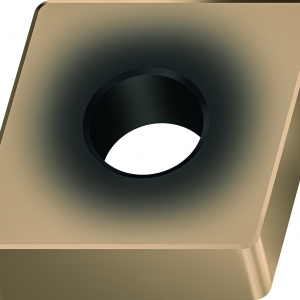




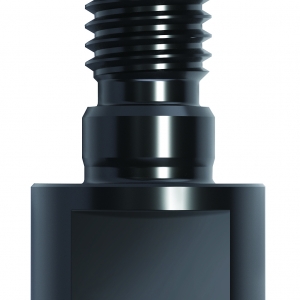

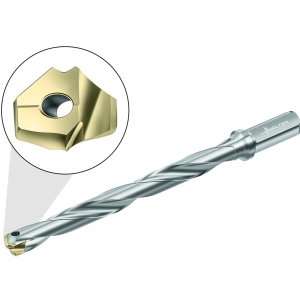
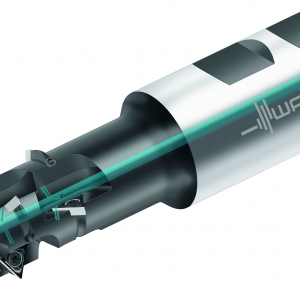
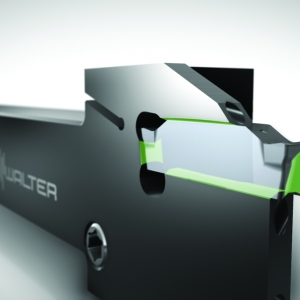
 PRODUCTS
PRODUCTS

